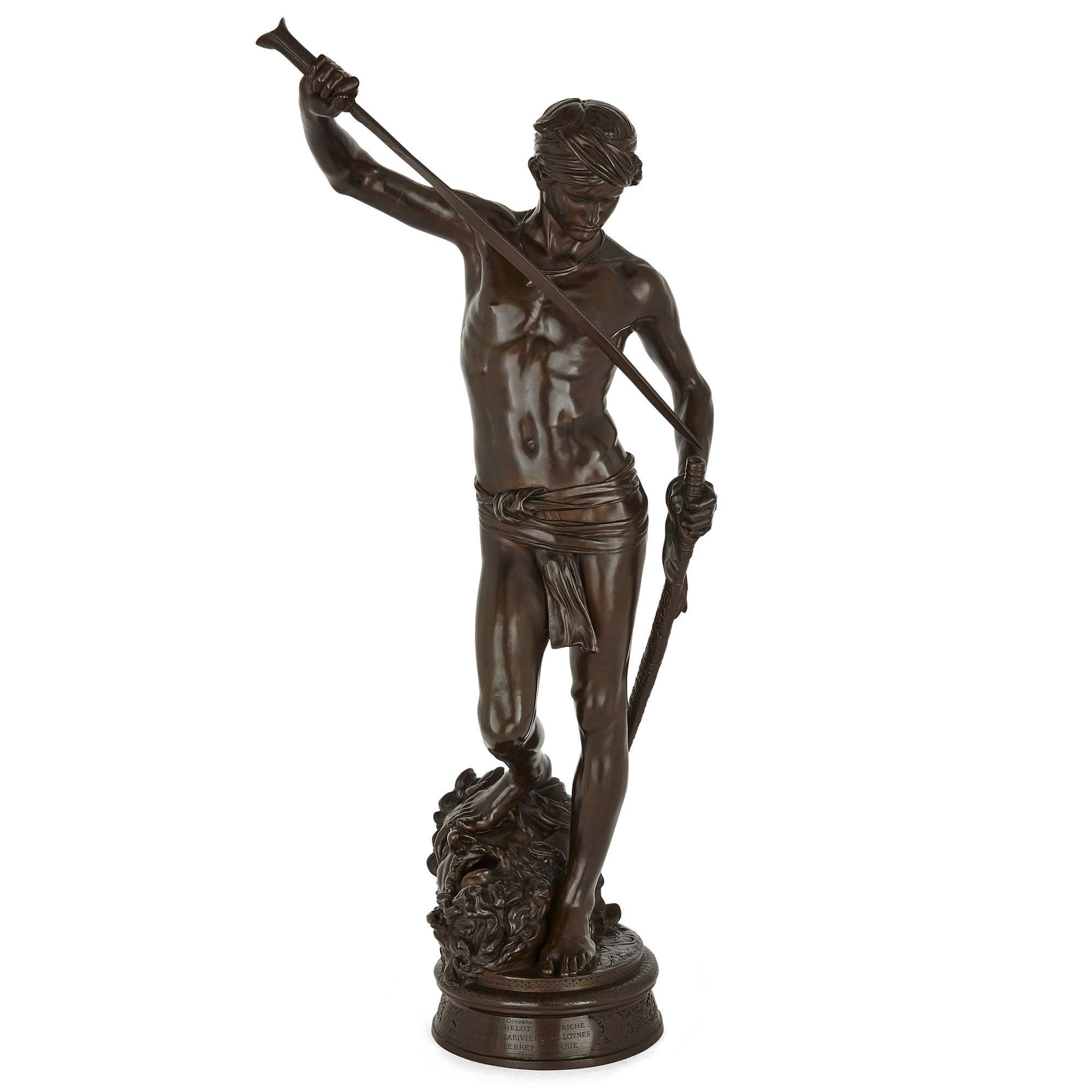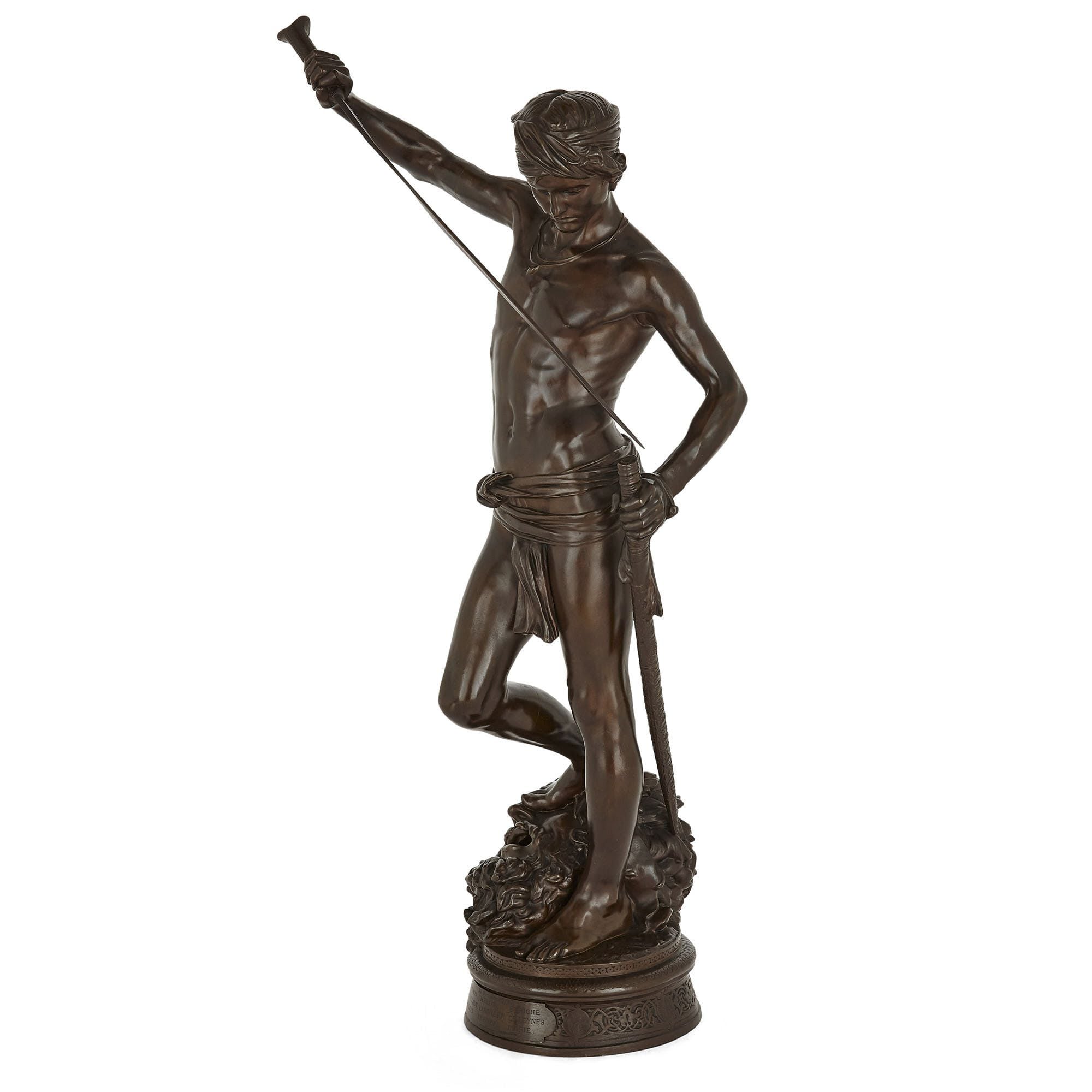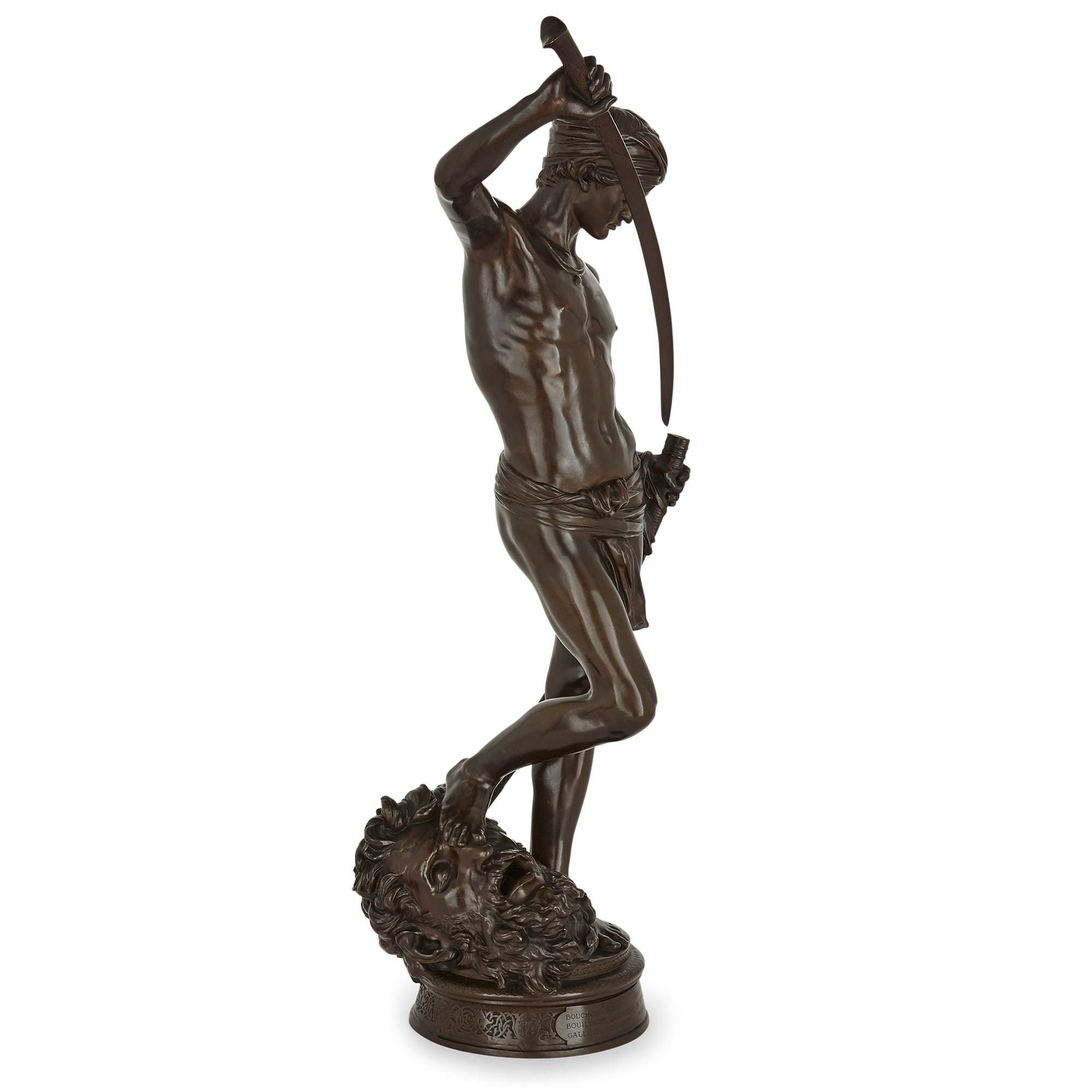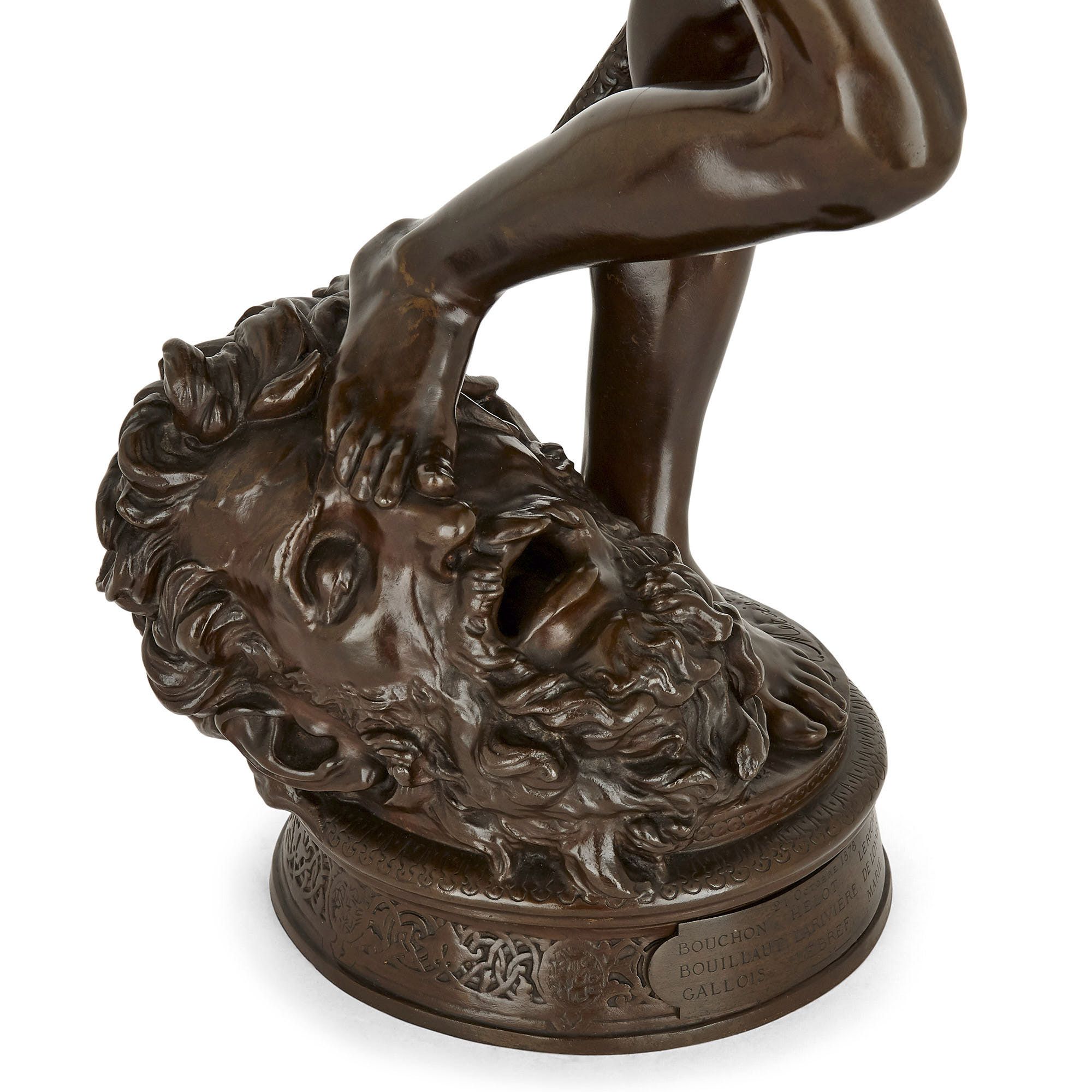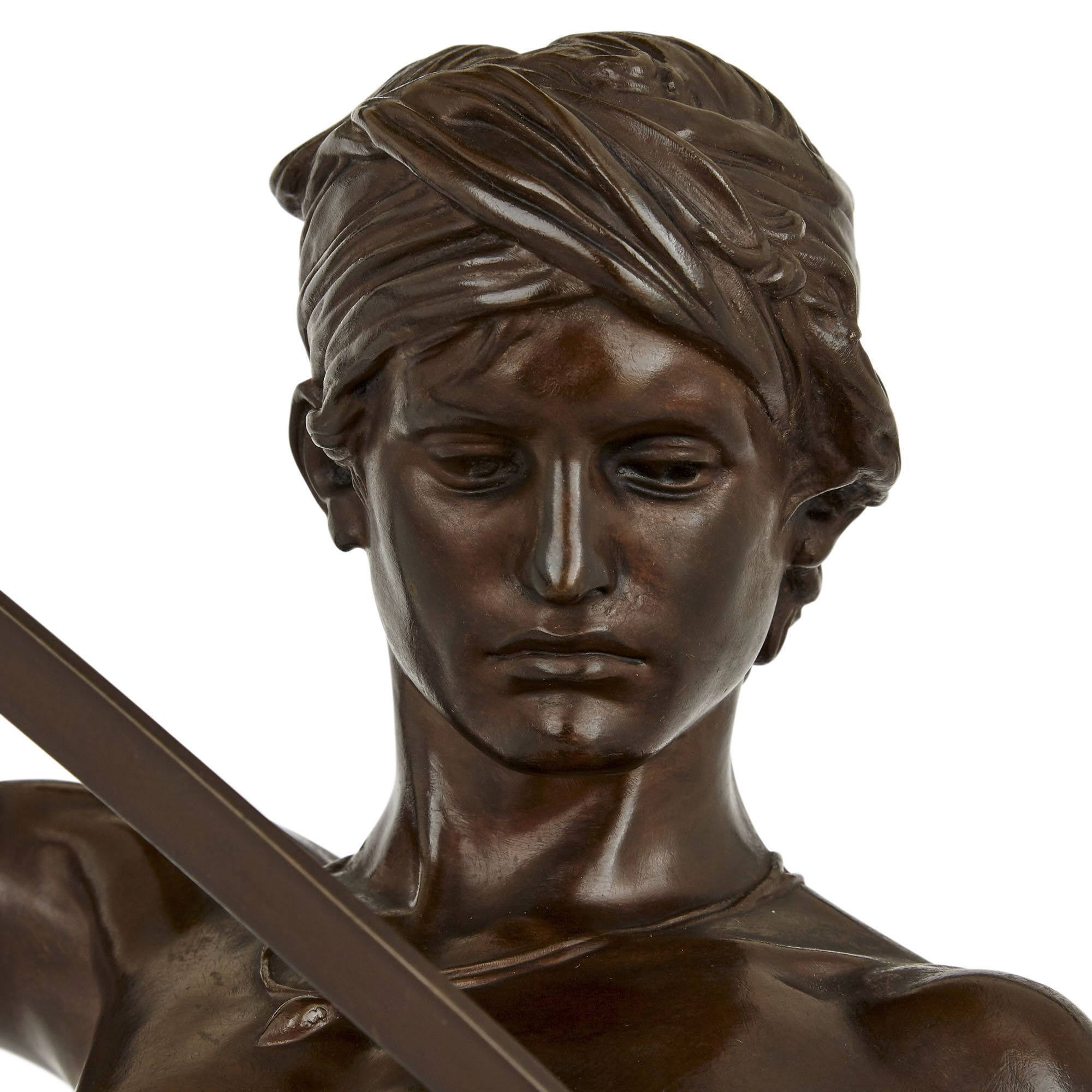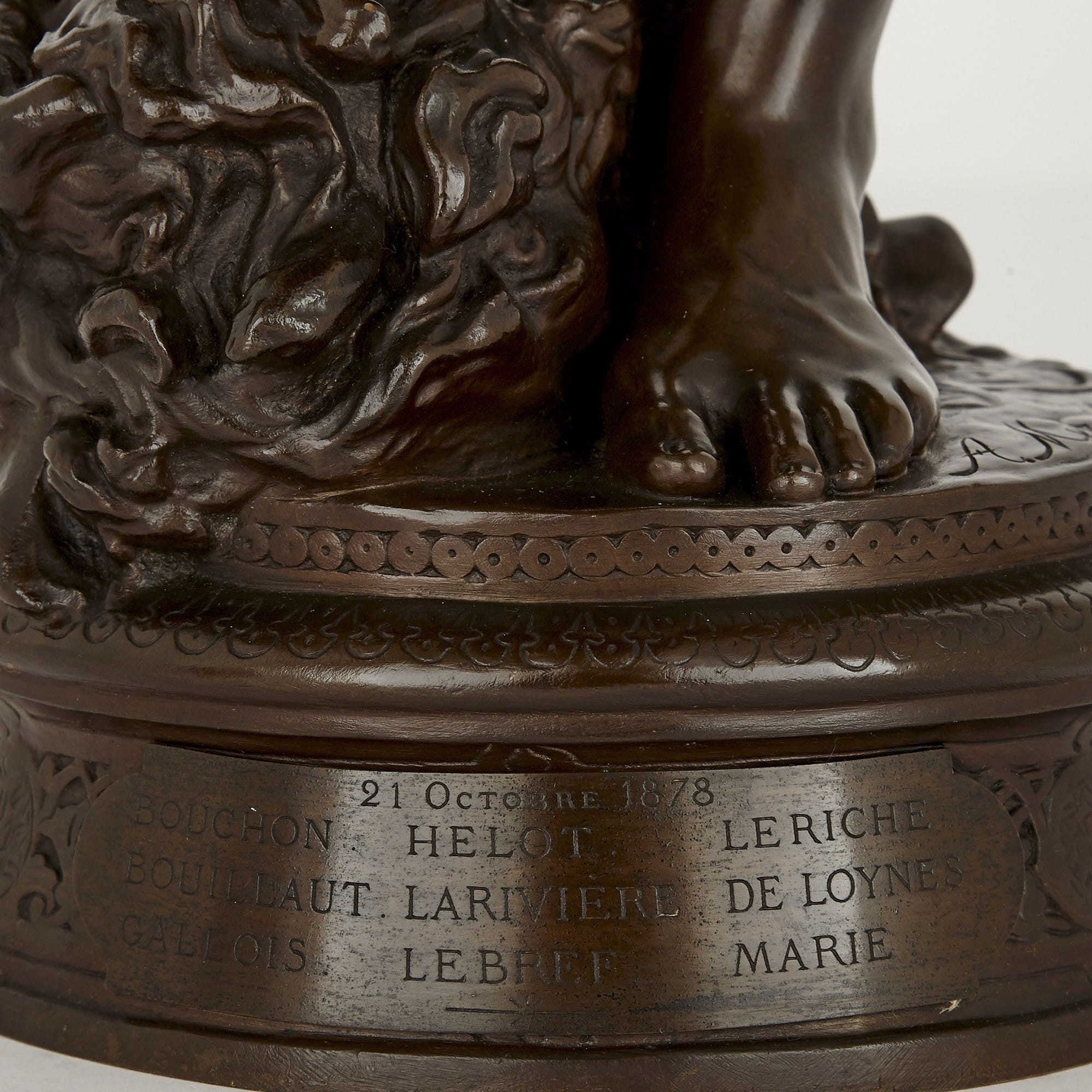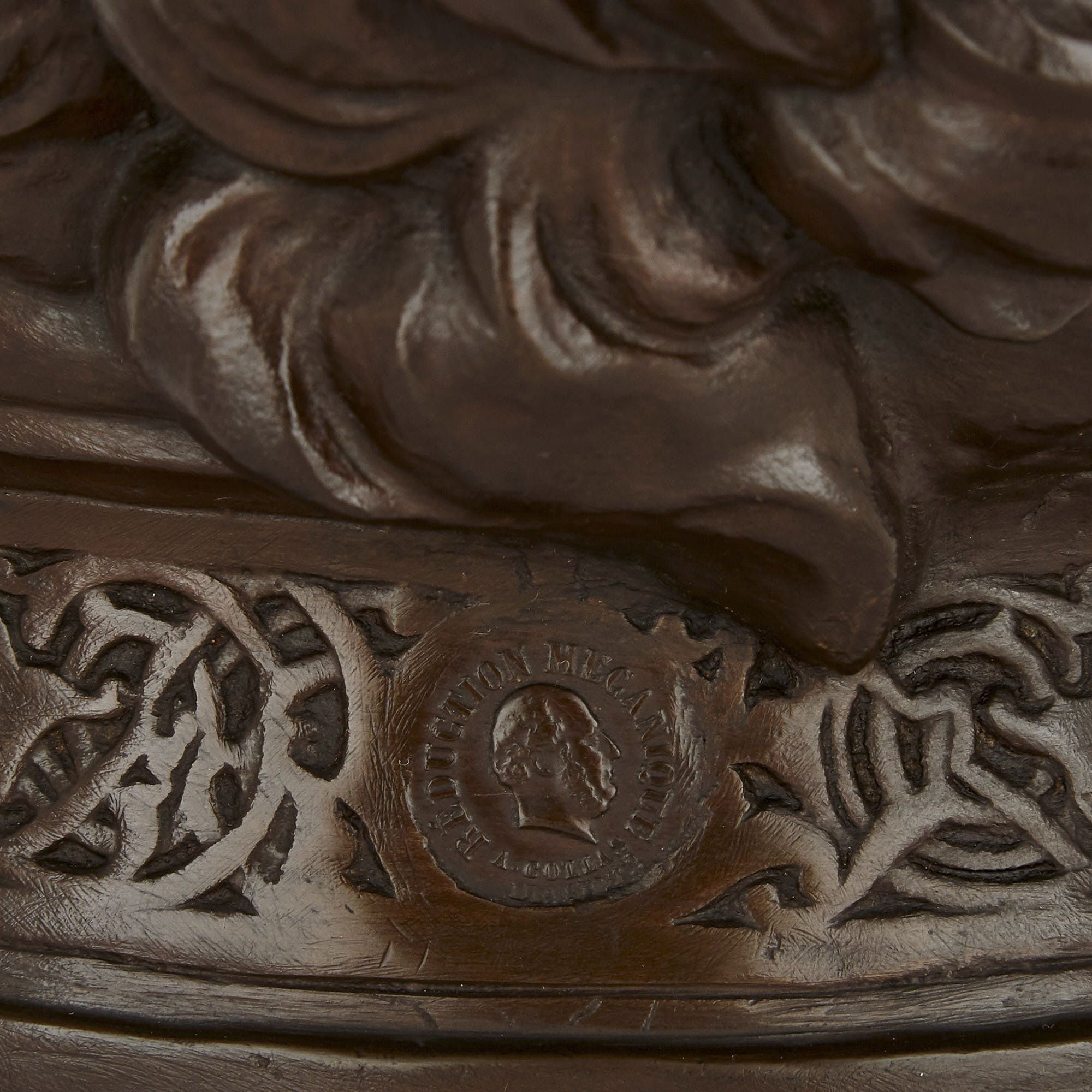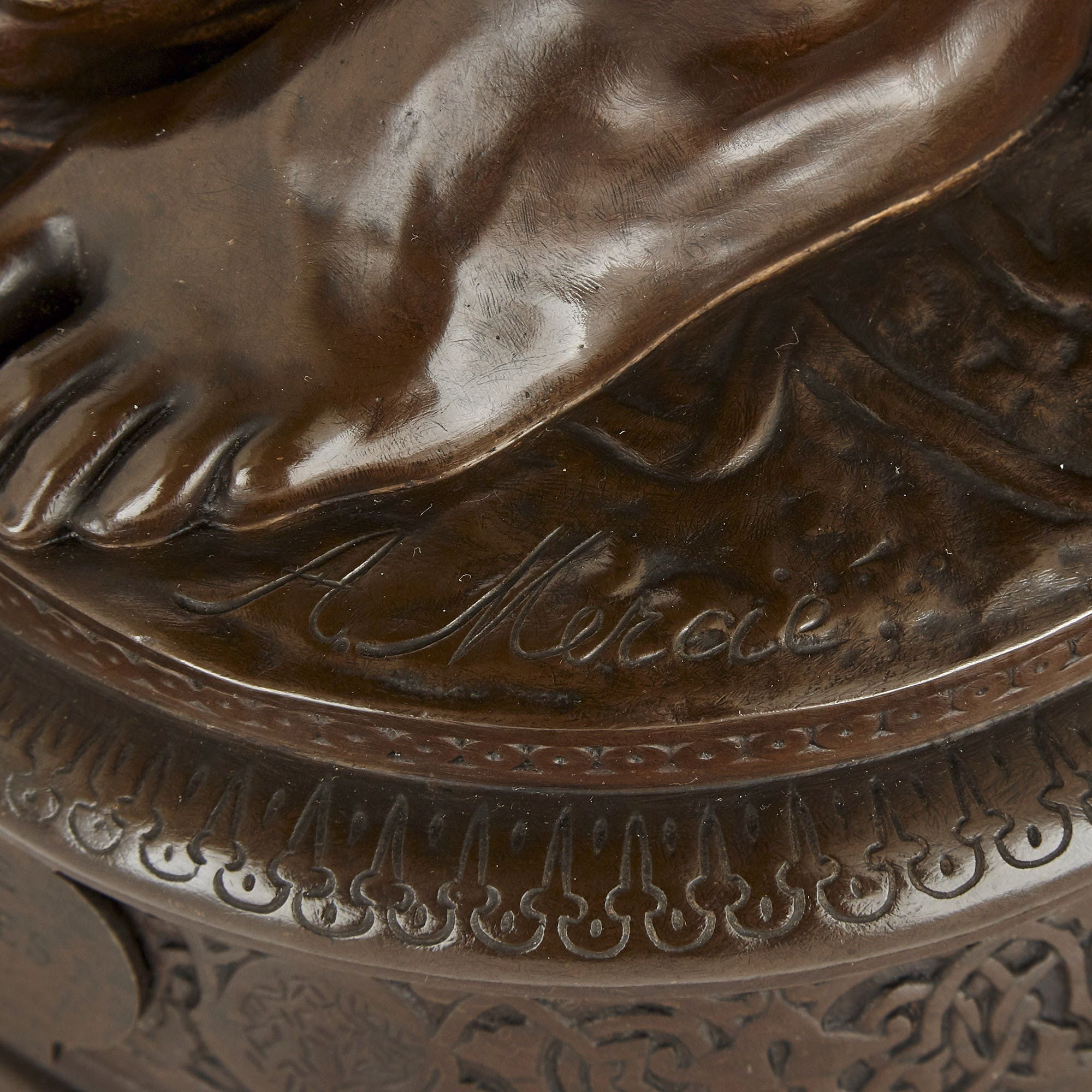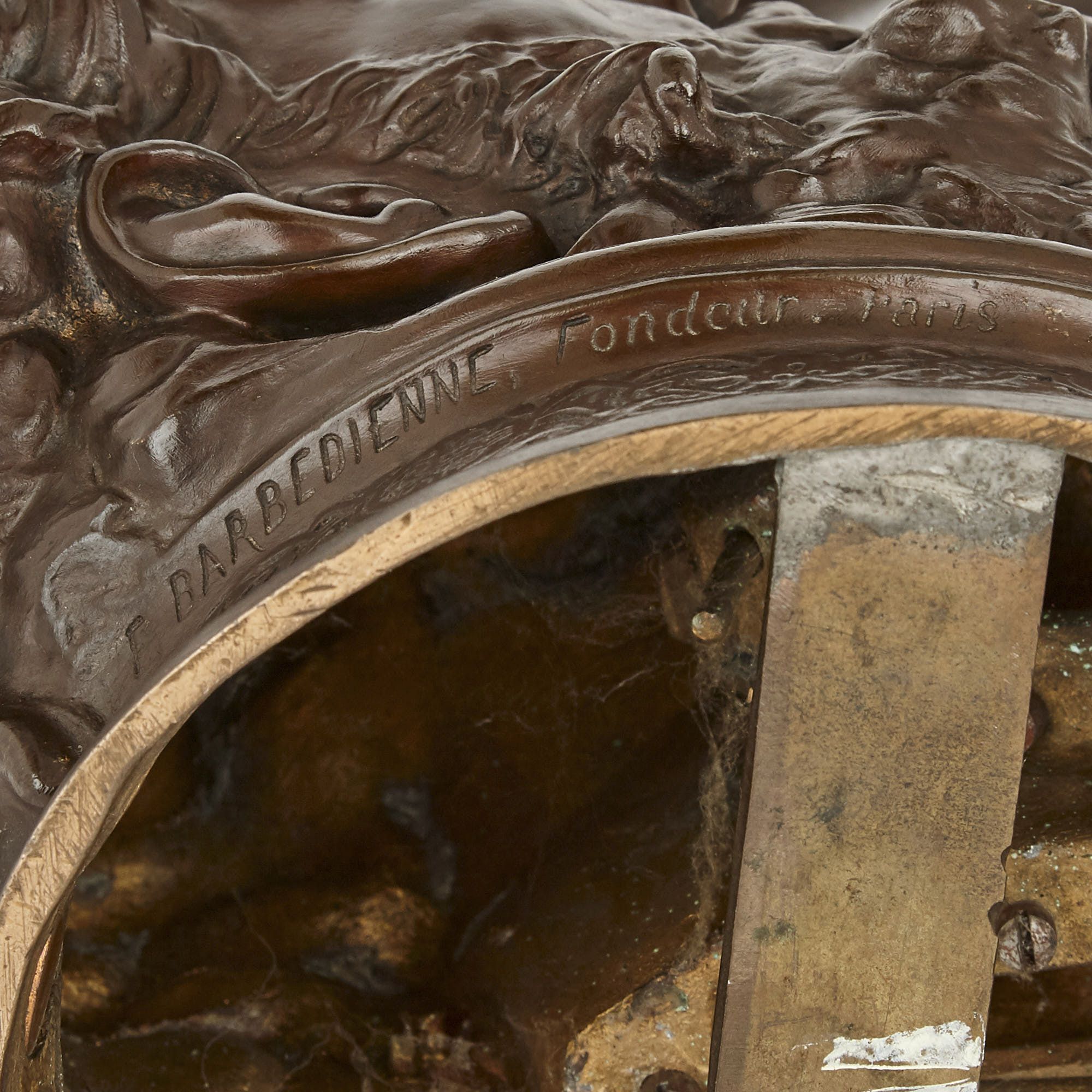This superb patinated bronze sculpture is after Antonin Mercié’s celebrated original known as ‘David Vainqueur’, or simply ‘David’. The subject is David, the Biblical hero whose tale of heroism and victory against seemingly insurmountable odds has provided fruitful material for artists for centuries. The sculpture depicts a youthful, lithe David standing in contrapposto, one foot raised on the severed head of Goliath. David sheaths his sword, his determined gaze focused with crystalline intensity on the seemingly simple task.
The sculpture refers to Florentine Renaissance prototypes, particularly the Davids of Raphael and Verrocchio, both of which Mercié studied while in Italy. The sweeping curves and sense of graceful movement and fluid action of Mercié’s David recalls both Raphael’s and Verrocchio’s originals. Indeed, the work of Mercié was termed ‘Neo-Florentine’ by several of his contemporaries, a sobriquet that removes all doubt as to the sculptor’s primary source of influence. The present piece is contemporary, however: the turban David wears, for instance, hints at the craze for Orientalism that was then sweeping French artistic circles.
Mercié’s original was one of the most renowned and consequential artworks produced during the 1870s. Mercié created the original plaster model in Rome in 1872, where he was studying having won the Prix de Rome in 1869. He sent the plaster model to the Paris Salon of 1872, where it won a First-Class medal, a Legion of Honour for its sculptor, and a commission for a bronze version by the State—this bronze edition being put on public display in 1874. The bronze proved phenomenally successful, proving to be one of the most popular images in illustrated magazines during the following years.
The success of the sculpture owed much to contemporary politics—as did the success of Michelangelo’s counterpart, for example. In 1870, France had been humiliated in the Franco-Prussian war, and the symbol of David defeating Goliath presaged France’s hoped-for slaying of the Prussian behemoth.
Ferdinand Barbedienne, one of the leading bronze fondeurs at the time, cast miniature versions of Mercié’s original in bronze in six separate sizes.
The bronze is signed to the base ‘A. Mercié’, is signed ‘F. Barbedienne fondeur Paris’, includes a reduction stamp for Collas, and a plaque to the front dated ‘21 Octobre 1878’ listed with nine names in French.




